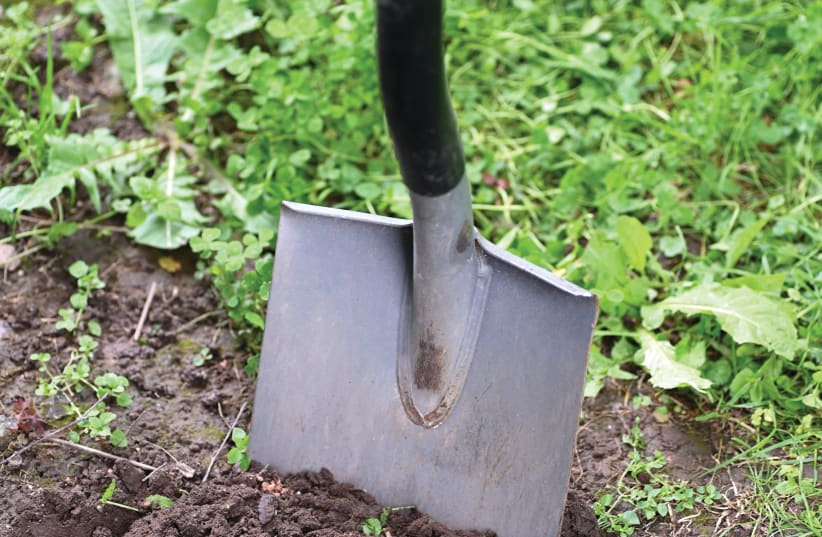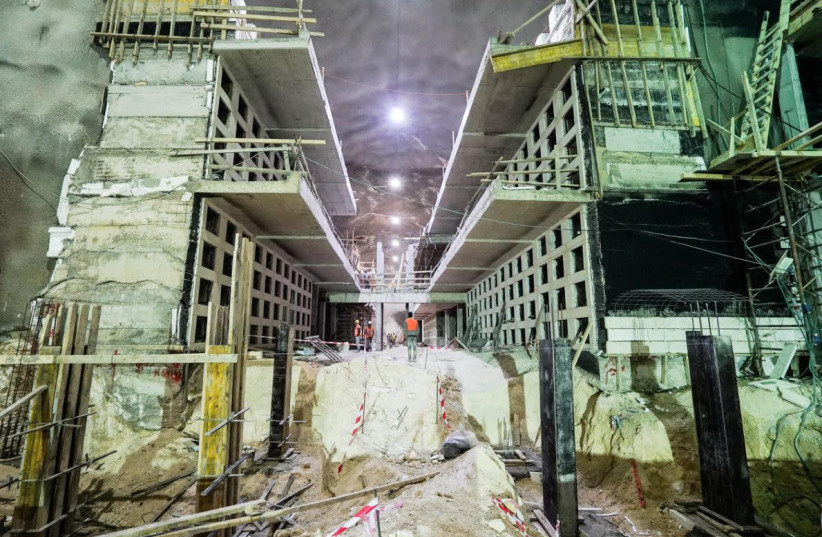Over the next few decades, Israel will need to bury a few million corpses. According to some estimates, by the year 2100 roughly 10 million people will die in the country.
Where will these people be buried?
We are most familiar with the field burial system in which the graves are arranged at fixed distances between them below the surface of the land. With that method, about 300 people may be interred within a dunam (1,000 square meters) of land. That system is clearly unsustainable. It will take up too much precious land for the living while filling Israel with areas that are the epitome of tumah (ritual impurity).
The Talmud, in fact, required all burial spots to be clearly marked so that habitable territory should not be lost. Indeed, over the past few decades, the Chief Rabbinate has supervised the reinterment of bones found on construction sites. While paying our respects to the deceased, we must also make space for new generations to build up this land.
To address the shortage of burial space, various alternatives have been proposed. One involves digging deeply enough to bury multiple people, such as spouses, in the same space. The first deceased is buried below and covered with stone and earth to provide the mandated space (six tefachim, or 48-60 cm.) between corpses. The second deceased is then later buried above the first one, with one gravestone ultimately memorializing two or more people. This proposal has been implemented in many cemeteries, even as there remains some halachic opposition to it. It should be noted that historically in Israel and especially in the Diaspora, burial plots using the field burial system did not have the requisite space in between them, largely due to space constraints.
A different alternative entails burial within multi-tiered structures. In this system, the deceased is placed on a special bed, which is inserted into an alcove that has multiple layers, again with the requisite space in between burial spots. Another alternative is multi-story burial structures that look like enormous parking garages from far. In these structures, a corpse is buried in the dirt of an artificially created ground level. These towering structures have spread to different Israeli cities but are not aesthetically pleasing. As an alternative, the city of Jerusalem built an underground necropolis that can accommodate 23,000 burial spots.
These massive concrete structures are expensive to build. Some people find them to be aesthetically cold, creating a harsh feeling in an emotionally fraught location. Many of these solutions, moreover, are departures from historical Jewish practice. All these structures still grant a significant amount of land for each corpse whose remains, following decomposition, do not require that much space.
Restoring a method from the Second Temple era
IN RECENT years, several activists have suggested restoring a method commonly used during the Second Temple period: likut atzamot (gathering bones for reburial). Under this approach, a corpse is buried under the explicit condition that following decomposition (say, a year after burial), the remaining bones will be reinterred into a small ossuary that is placed into a multi-layered alcove or burial cave. This initiative, called Kevurat Eretz Yisrael, suggests that families or communities will utilize the same cave or building. Multiple generations of family members or comrades can have a final memorial spot around their loved ones. Archaeologists have found such caves from antiquity, which contained the remains of dozens and even hundreds of members of the same family.
This practice is already found in the Bible. Joseph’s bones, for example, were initially buried in Egypt and ultimately reinterred in the Land of Israel. This tale has served as a precedent for many people to bring the remains of their family members buried in the Diaspora to reinterment in Israel.
The Jerusalem Talmud describes how this procedure was done. “In earlier times, they were burying them in trenches. When the flesh had rotted away, they collected them and buried them in cedar wood.” The Talmud then describes the emotions of the living family members. On the day itself, the mourners were sad and would sit shiva until nightfall. The following day, they were happy since the final decomposition of flesh was taken as a sign that the deceased was no longer under final divine judgment. According to some sages, this procedure could even be performed over the intermediate days of a holiday (Hol Hamoed) because of the emotional relief provided by this experience. Since many people did not want to collect the bones of their loved ones, volunteer societies were created to fulfill this task, much the way burial societies function today. The procedure of likut atzamot continued in medieval times, as attested by Nahmanides, and was codified in the Shulchan Aruch by Rabbi Yosef Karo.
Restoring this practice will save billions of shekels and many dunams of land. To make this proposal functional, two things are required. Firstly, individuals must consent to their temporary burial followed by the reinterment of their bones. Secondly, broader society must embrace restoring this ancient practice. In recent years, Rabbi Dov Lior of Kiryat Arba and Rabbi Yuval Cherlow of the Tzohar Rabbinic organization endorsed this proposal, and it has been recently implemented in Kibbutz Yavneh. The Chief Rabbinate Council has largely opposed it, but its own authority on burial rites, Rabbi Yaakov Roza, has offered some tentative support for the plan, provided that it gains public support. After all, Jews don’t change rituals easily, especially those relating to death and mourning.
Time will tell if this practice takes root. Unfortunately, in this case, time is not on our side. ■
The writer is the executive director of the Halachic Organ Donor Society (HODS) and author of A Guide to the Complex: Contemporary Halakhic Debates. Facebook.com/RabbiShlomoBrody.

